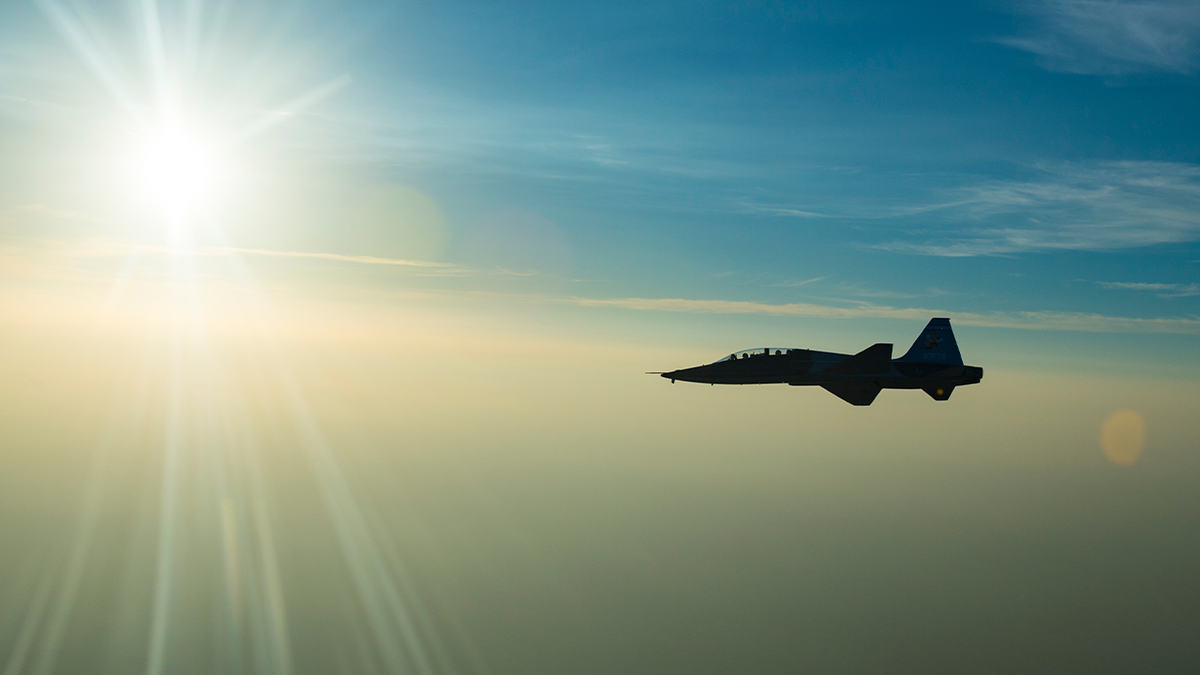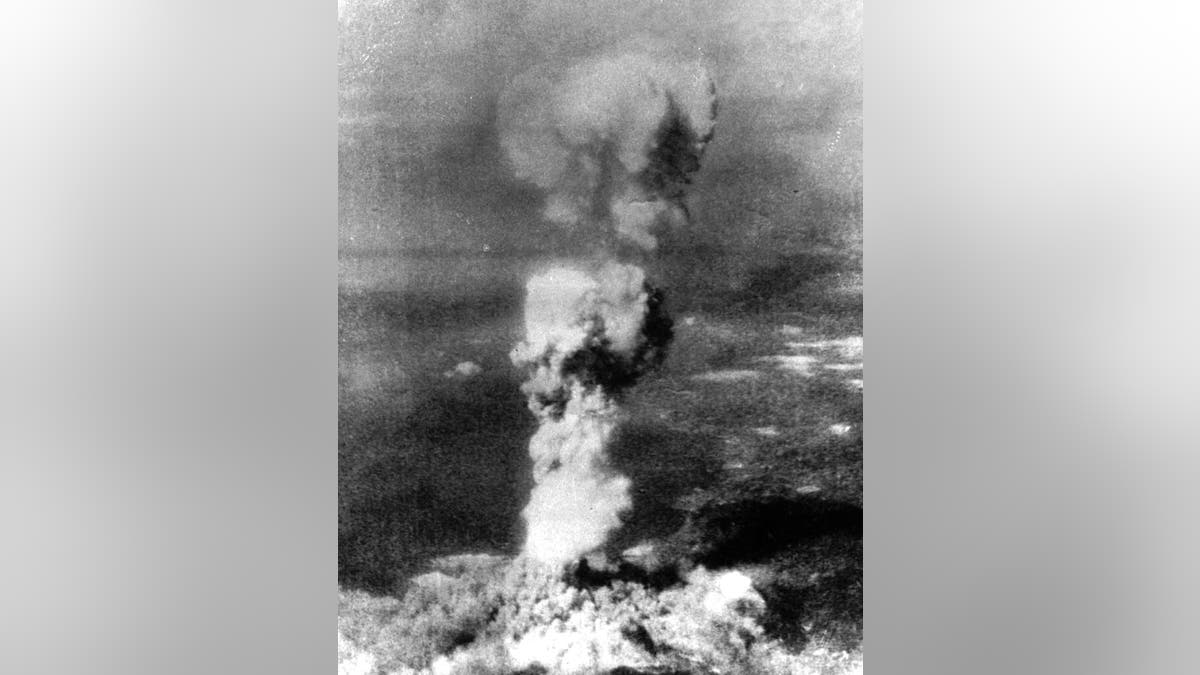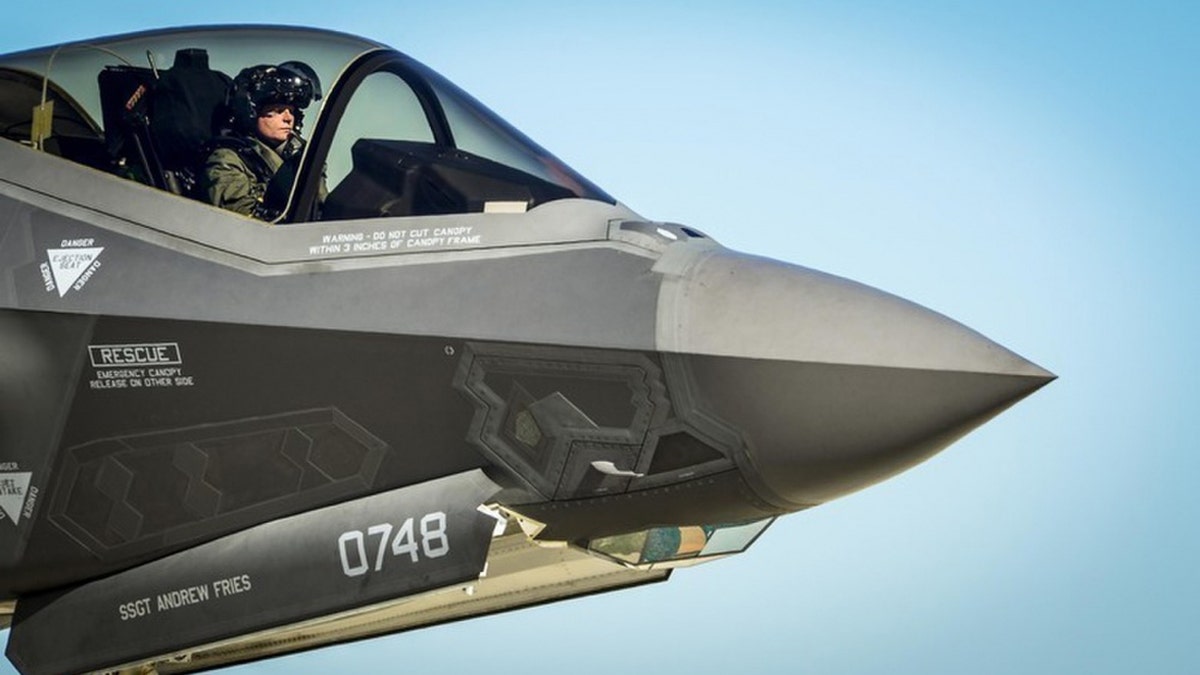Iran trying to ‘scare off’ support for Israel: Dr. Rebecca Grant
FOX News contributor Dr. Rebecca Grant tells ‘FOX News Live’ that she believes tensions in the Middle East can be contained to just Israel.
The Pentagon announced a new tactical nuclear bomb program on Oct. 27. Rep. Mike Rogers, R-Ala., and Sen. John Wicker, R-Miss., welcomed the new bomb because it "will better allow the Air Force to reach hardened and deeply-buried targets" in Europe and the Pacific.
This B61-13 variant is designed for heavy blast against nasty targets such as underground enemy nuclear missile sites. That’s you, China and North Korea.
And by the time the bomb is ready after the late 2020s, AI may have a hand in how and when it’s detonated.

By the time the B61-13 is ready, AI will be fully integrated into conventional weapons targeting for combat aircraft. (U.S. Air Force photo/Senior Airman Keifer Bowes)
AI is already part of the intense modeling for nuclear weapons design. Nuclear warhead tests are banned, so AI will help the operational check-out before the new B61-13 bombs are sent to weapons storage facilities at Air Force bases.
NAVY FINDS PERFECT WINGMAN FOR CARRIER PILOTS – AI
However, the most intriguing question is: How much could AI be involved in a tactical nuclear weapons launch decision?
So far, the Pentagon is adamant that only humans and not AI will launch nuclear weapons. But the seeds of change are already present.
"Artificial intelligence is extremely powerful," Gen. Mark Milley, retired chairman of the Joint Chiefs of Staff, told "60 Minutes" on Oct. 8. "It's coming at us. I suspect it will be probably optimized for command and control of military operations within maybe 10 to 15 years, max."
Here’s why AI might just be crucial, even for nuclear weapons.
First, AI is already improving targeting data quality. "It’s a lot easier to have an AI algorithm sort through the noise, especially if you’re looking at a lot of water," explained Margie Palmieri, the Pentagon’s deputy chief digital and artificial intelligence officer, in an interview with Military Officer Magazine.
WHAT IS ARTIFICIAL INTELLIGENCE (AI)?
By the time the B61-13 is ready, AI will be fully integrated into conventional weapons targeting for combat aircraft. Crews and commanders will grow accustomed to teaming with AI for rapid evaluation of targeting alternatives. They’ll find the AI decision aids work pretty well, and give U.S. forces an advantage in the heat of battle.
Of all the U.S. nuclear weapons, the new B61-13 is the perhaps most likely to be used in combat. If North Korea or some other foolish rogue uses a single nuclear weapon in a regional conflict, the new B61-13 launched from a bomber is designed to be the U.S. retaliation option.
Of course, the nuclear weapons launch authorization will come from the president, who will then delegate it to the commander in charge. However, there’s a good chance the final choice of target for the B61-13 won’t be made until the Air Force bombers are already in flight.
That’s when AI may play a very big role. Particularly when the mission gets dicey.

A column of smoke rises 20,000 feet over Hiroshima, western Japan, after the atomic bomb was released on Aug. 6, 1945. (George R. Caron/US Air Force via AP, File)
Look back at what happened the last time America used a nuclear weapon. On July 24, 1945, President Harry S. Truman ordered Gen. Carl Spaatz, commander of U.S. Army Strategic Air Forces, to drop the special atomic bomb on any one of four cities in Japan anytime after Aug. 3. Hiroshima was hit on Aug. 6, 1945.
5 WAYS AI IS LEVELING THE BATTLEFIELD
Then on Aug. 9 the crew of the B-29 Bockscar set out to bomb the city of Kokura, but they found the city obscured by a smoke screen from the Yawata Steel Works. The B-29 crew tried a target run over Kokura anyway, broke off, started taking enemy fire, circled again, ran low on fuel, then decided to fly the 95 miles to release the bomb on their alternate target of Nagasaki instead.
Now picture B-21 pilots in the 2030s, faced with a mission to employ B61-13 nuclear bombs. Turning to AI for a generative, predictive evaluation of battle conditions may be the smartest choice.

Years from now it’s possible that airmen will trust an unmanned plane with AI to carry a B61-13 nuclear bomb, if it’s the best way to get the mission done. (Staff Sgt. Christopher Callaway/434th Air Refueling Wing/Public Affairs )
Those pilots will call on every bit of AI in their cockpit to check on collateral damage effects, pull information from the battle networks, locate the latest enemy missile launcher target positions, evade enemy aircraft and missiles are pursuing them, and more.
Why would reliance on AI even be necessary?
CLICK HERE FOR MORE FOX NEWS OPINION
The U.S. expects to be outnumbered in a future battle fought at extended ranges. Aircraft on a tactical nuclear mission will have only a fleeting chance to hit targets. Maybe the target is a mountain bunker holding enemy nuclear weapons or elusive missile batteries in tunnels.
If the U.S. president authorizes using a B61-13, that’s a mission that must be completed at all costs. AI will have a lot to offer in those tense moments.
The Air Force also wants to buy a lot of unmanned planes for its future combat fleet. Years from now it’s possible that airmen will trust an unmanned plane with AI to carry a B61-13 nuclear bomb, if it’s the best way to get the mission done.
CLICK HERE TO GET THE FOX NEWS APP
None of this will happen casually. The Air Force has an extensive nuclear certification and surety process. It will always take a human decision to deploy, fuze, load and get airborne with nuclear bombs. However, expect airmen to start thinking about how AI can strengthen nuclear deterrence.

























